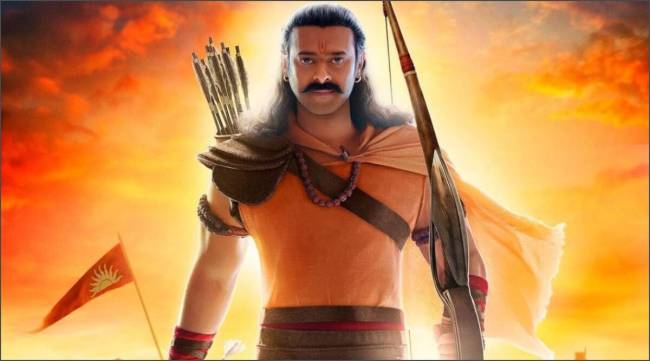Opinion Adipurush failure: It’s not about dialogues – the film is rooted in the debased politics of our time
The only goal of the movie seems to be to project itself as a reflection of Hindutva. In the process, all characters and the epic itself lose nuance and fall flat
 Actor Prabhas in Adipurush movie poster. (File)
Actor Prabhas in Adipurush movie poster. (File) Written by Ajay Gudavarthy
There was significant anger against the recently released film, Adipurush. Much of the debate, however, has been concentrated around a few dialogues by Bajrang that sounded “vulgar” and “debased”. But dialogues form only one part of a project that is much larger. Adipurush was aimed at reaching audiences, young and old, through what the makers thought was the mood of the nation. Perhaps, they thought it would appeal to the young who had only heard about the epic. Introducing them to it through the lens of the current political rhetoric seems to be what they bet on. The outright rejection of this agenda is heartening but we need to make sense of what is being rejected.
At the heart of this film is unabashed mediocrity. Almost every character is forgettable. Lakshman is depicted as rude and dimwitted. Hanuman is vulgar, silly. “Bajrang” seems to have become the victim of the confusion felt during the Karnataka elections between Bajrang Bali and Bajrang Dal. Even the lead character of Raghav has no presence. He looks confused, and muted, not determined or strong-willed. The way characters are portrayed mirrors the current political scenario.
Why did the characters look so listless? Because every emotion in the film is synthetic. We feel no sense of attachment to any of the characters because nobody stands for anything. There are no real beliefs, only pretence. For such a gaze, the epic of Ramayana itself is the problem, therefore, the need to tweak it.
Epics are grand conflicts between good and evil, truth and untruth. The message they relay is that one should stand by good and be prepared to suffer for it. As Gandhi said, preparedness for suffering alone creates a satyagrahi. The search for the truth cannot be divorced from the willingness to suffer. But what Adipurush and its characters seek is power. In today’s political climate, suffering is weakness. And that is the central issue. How can Ravan be the villain, when we admire the very characteristics he stands for — power and being unscrupulous?
It is a different matter that in the epic, even Ravan demands respect because of his scholarship and authentic devotion to Lord Shiva. In Adipurush, Ravan is depicted as a freshly-minted Afghan in a fur coat feeding large pieces of meat to his bat-like flying machine. Ravan is mocked for the way he walks and talks. Every character is mocked and bulldozed into nothingness. It’s a dark and nihilistic world where even hate is not real.
The movie is Hindutva personified. The makers seem to believe that VFX and digital imagery will justify and magnify the effect of their agenda. Instead of the focus being on the nuances of individual characters, the movie obsesses over visual effects. The idea seems to be that CGI will legitimise the transformation they have tried to undertake in the film, abandoning sensibilities that accompany certain temporality.
Epics are detailed documentation of conflicting ethics. They are about the need to live life with a philosophy and how best we can construct meaning from it. But in the current climate, life needs to be purged of details, leave alone nuance. Why does Shabari feel the need to meet Lord Ram? The epic has a detailed storyline that explains this but in Adipurush, we find the entire scene is included just so Raghav could say that caste is about deeds and not determined by birth.
There is no patience for what the essence of the relationship between Ram and Sita was either. The relationship is doused in picture-perfect backdrops that act as a simulacrum of love. But the essence of love and romance requires details. How could one graft those details when every character is only a devalued self?
When goodness requires silence and silence is considered anathema, the only character that ends up, at least in part, etched in memory is that of Ravan. Apart from Saif Ali Khan’s excellent performance, the character with all its buffoonery remains authentic to the script because it is closest to the gaze that of the film. Perhaps that was the intention. To create a story driven by enmity; to profess that life has no meaning beyond defining one’s self beyond aggression.
The current environment has moments of resonance with the gaze the film promotes but it cannot be reduced to that. Hindutva politics and its nihilistic gaze cannot connect beyond its own limits. It works in moments of desperation but what people are looking at even in those moments is an elevated experience.
The writer teaches political science at JNU. His most recent book is ‘Politics, Ethics and Emotions in New India’





